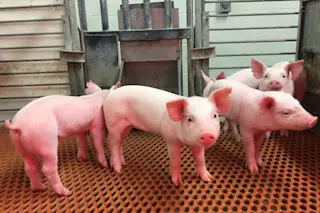Scientists used the gene editing technology CRISPR to stop these pigs from getting a deadly flu. (Credit: Kristin Whitworth/University of Missouri) As flu season rears its ugly head, humans aren’t the only ones on the virus’ warpath. Pigs are also vulnerable to deadly infections. Porcine illness can mean huge losses for farmers and price hikes for pork. Now, new research shows gene editing could be a solution. “One of the greatest concerns for U.S. producers is outbreaks of new [viral] diseases,” said Raymond “Bob” Rowland, a pathobiologist at Kansas State University in Manhattan and co-author of the new study, in a media statement. “This work demonstrates the importance of [gene-editing] technology in solving complex disease problems.”
Newborn pigs are particularly susceptible to two viruses: transmissible gastroenteritis virus (TGEV) and porcine epidemic diarrhea virus (PEDV). Infection with the PEDV virus is almost always fatal. The piglets die from dehydration. In 2013, ...














